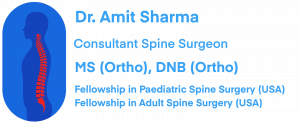Slip disc treatment in Mumbai
Slip disc: Diagnosis and Treatment
Slip disc or back disc herniation is most common spinal disorder. Slip disc meaning is protrusion of part of the disc in spinal canal causing pressure on spinal cord and nerves. Also, as body perceives disc material as foreign material and fights against it. This leads to inflammation around spinal nerves. A slipped disc can cause varying amount of symptoms ranging from minimal pain to emergency situations with loss of power in extremities and bowel-bladder control depending upon the size of the slipped sic and various other factors. It mainly affects elderly patients; however, younger people can also get affected.
Slip Disc Meaning:
Intervertebral disc is made up of inner gel like substance, called nucleus pulposus and outer strong cloth like woven layer, annulus fibrosus. In slip disc, nucleus pulposus comes out through a rent in annulus fibrosus causing intervertebral disc herniation, which compresses the spinal cord and spinal nerves. There are different grades of disc herniation as seen on MRI:
- Disc Bulge/ Disc Protrusion: In mild cases, there is thinning and bulging of annulus causing disc bulge in spinal canal. In these cases symptoms are usually mild as pressure on spinal cord is minimal. Majority of these cases get better with nonsurgical treatment.
- Disc Extrusion: When nucleus comes out through a rent in annulus and presses spinal cord directly is called disc extrusion. Patient may experience significant symptoms. Many of these cases require a long course of medical treatment with activity restriction and physiotherapy. Some cases of disc extrusion might need epidural injection or spine surgery. Sometimes, extruded disc may get resorbed to some extent or might shrink due to loss of nutritional supply from the vertebral bodies, and this may lead to resolution of symptoms naturally.
- Disc sequestration: In these cases, part of the intervertebral disc which comes out breaks away from native disc and lies freely in the spinal canal. Majority of these patients have severe symptoms due to significant pressure of spinal cord and usually need some sort of slip disc surgery to get good relief. Rarely, part of the broken disc might get resorbed.
Primary cause of slip disc is age related degeneration (chronic wear and tear). This causes loss of water content of the disc material (dessication) leading to loss of it’s shock absorbing capabilities. Patients who are overweight and who have poor lifestyle (wrong posture, long sitting, inactivity) are more prone to develop these degenerative changes. Occasionally, acute injury and accident also can be the cause of disc prolapse.
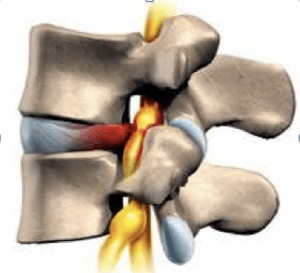
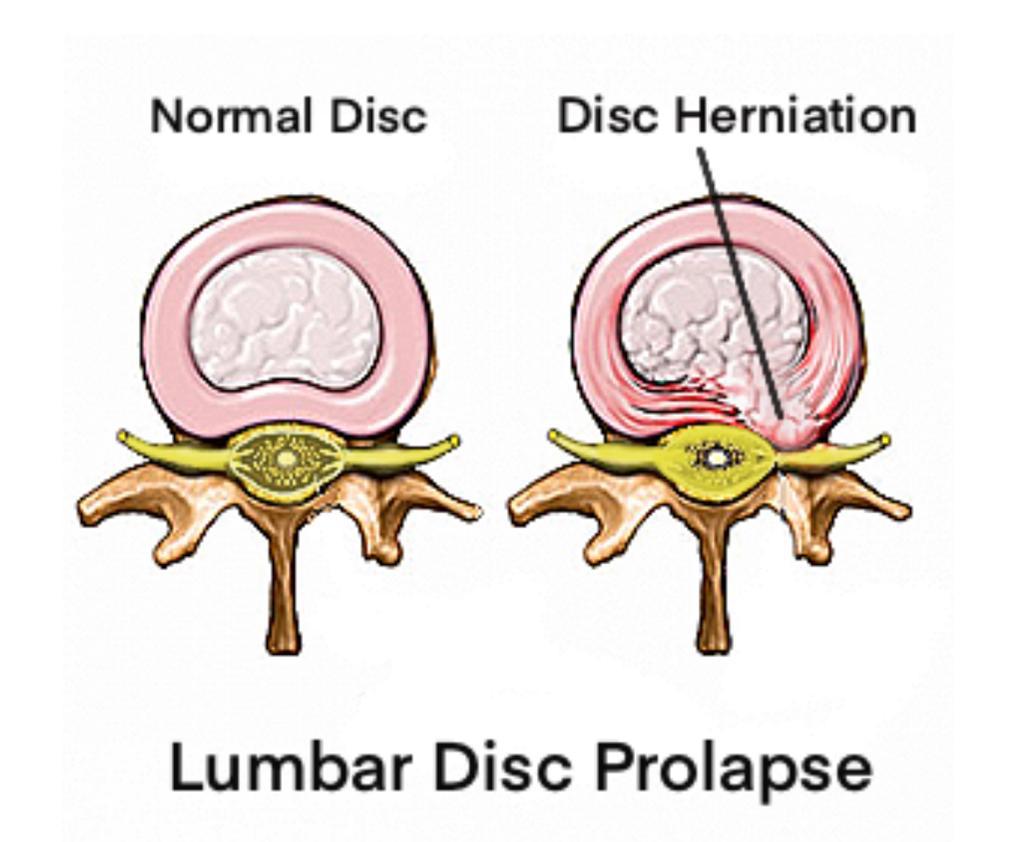
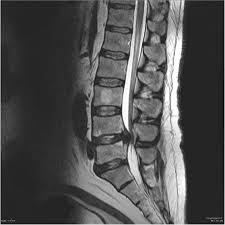
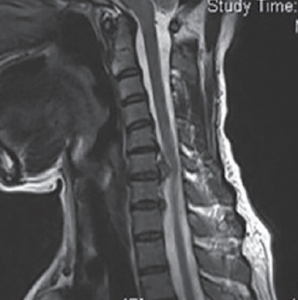
Slip Disc Symptoms:
A disc herniation can be totally asymptomatic, especially if the size of disc herniation is small. However, in majority of the cases, the slipped disc causes varying amount of symptoms depending upon size herniated disc, duration of pressure on nerves and inflammation around the nerve. Initially, patients will feel pain at the site of disc prolapse (neck in case of cervical disc prolapse, upper back in case of thoracic disc prolapse and lower back in lumbar disc prolapse).
When spinal nerves in the vicinity starts getting affected, pain and tingling-numbness in the extremities (radiculopathy) which may lead to loss of sensation or loss of muscle power in severe cases. In extreme situation with sudden and severe pressure on spinal cord, patient might lose bladder-bowel control also, which requires urgent spinal cord decompression surgery to prevent permanent damage to the spinal cord. A disc prolapse in cervical and thoracic spine can also cause rigidity in the body (spasticity) with loss of balance.
Slip Disc Diagnosis:
Primary diagnosis of a slip disc is made based on typical clinical history of local pain in spine with nerve related symptoms in the extremities. On physical examination, spine specialist may also find evidence of nerve stretch and compression signs on upper/ lower extremity in the form of loss of sensation and muscle weakness. An X-RAY is usually done as first line of investigation to rule out major bone abnormality.
In severe cases which are not responding to medical treatment and physiotherapy, an MRI Scan is done which will show the level and degree of prolapsed disc, and will help spine specialist determine which kind of treatment will be best for the patient. In certain situations an EMG-NCV (Electromyography-Nerve Conduction Velocity) is done to assess nerve function. A CT Scan is done when detailed assessment of bone structure is required or when MRI cannot be done.
Slip Disc Treatment:
A proper medical treatment, some amount of activity restriction and slip disc exercises (physiotherapy) provides sufficient pain relief to most of the patients to help them live an active life. However, disc degeneration will not reverse and prolapsed part of the disc also will persist, and hence some amount of activity restriction is recommended even after symptom relief to prevent recurrence of symptoms. For the patients who don’t get relief by medical treatment, various options are available.
- Epidural Injections: For patients who primarily present with radiculopathy (arm/ leg pain) and don’t have emergency symptoms (loss of sensation, weakness, loss of bladder-bowel control), epidural injection can be tried to provide pain relief to the patient. A small amount of anaesthetic medication and steroid are injected next to the prolapsed disc. This reduces inflammation on spinal nerve as well as disc material to provide relief to the patient. Epidural injection doesn’t reverse disc degeneration or disc herniation; however, it helps patients to recover from acute phase of symptoms. If symptoms recur, injection can be repeated 2-3 times.
- Microdiscectomy: Patients who do not get adequate relief after medical treatment or epidural injection, or those who have emergency symptoms need to undergo slip disc surgery with removal of protruded disc material. Microdiscectomy is most commonly done slip disc surgery. A small hole is made on the skin and only the part of disc which has come out is removed. There is immediate relief of symptoms and recovery is very quick.
- Endoscopic Discectomy: A small tube like endoscope is inserted in the body under local/ general anesthesia and protruded disc is removed under magnified endoscopic vision. Recovery from this surgery is very quick and this procedure can be done as day-care also.
- LASER Disc Decompression: In this technique a LASER probe is inserted next to protruded part of the disc and then LASER is emitted in disc material. This liquefies nearby disc material leading to reduced disc turgidity, which in turn reduces pressure on nerve. It also reduces quantity of chemicals released from disc which can irritates spinal nerves.
In patients with associated significant back pain/ neck pain, severe disc degeneration (spondylosis), vertebral slip (spondylolisthesis), spine fracture (spondylolysis) and spine deformity (scoliosis/ kyphosis), a spine fusion/ instrumentation might also be advised by your spine doctor along with the removal of slipped disc.
Top Slip Disc Doctors in Mumbai Near You
We take pride in being recognized as the best slip disc doctors in Mumbai. Our commitment to patient-centric care and our expertise in slip disc treatment have earned us this reputation. When you choose us, you’re opting for world-class care right here in Mumbai.
For any queries please contact us on +91-9967600461
Frequently asked questions:
A slip disc, also known as a herniated disc, occurs when the inner core of a spinal disc protrudes through the outer layer. It can be caused by aging, injury, or wear and tear on the spine over time.
Common symptoms include back pain, numbness, tingling, and muscle weakness. These symptoms can radiate down the legs (for lumbar disc issues) or into the arms (for cervical disc problems).
Slip disc diagnosis typically involves a physical examination, medical history review, and imaging tests such as X-rays, MRI scans, or CT scans to visualize the spine.
Yes, many slip disc cases can be managed without surgery. Non-surgical treatments include physiotherapy, medication, lifestyle modifications, and epidural injections.
Slip disc surgery is considered when non-surgical treatments do not provide relief, and the patient experiences severe pain, neurological symptoms, or loss of function. Our top slip disc doctors in Mumbai evaluate each case individually.
Minimally invasive slip disc surgery involves smaller incisions, reduced tissue trauma, and faster recovery. Yes, we offer this advanced technique in Mumbai, performed by experienced surgeons.
Recovery varies from patient to patient but may take several weeks to months. Our team provides post-operative care and rehabilitation to support your recovery.
Like all surgeries, there are risks involved, including infection, bleeding, or nerve injury. Our Mumbai-based slip disc specialists take precautions to minimize these risks.
Yes, by addressing the underlying causes and providing personalized rehabilitation, slip disc treatment in Mumbai can help improve spinal health and reduce the risk of future issues.
Look for slip disc specialists with a proven track record of successful treatments, positive patient reviews, and expertise in both surgical and non-surgical approaches.
